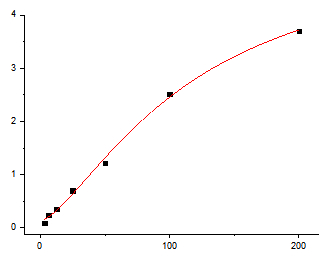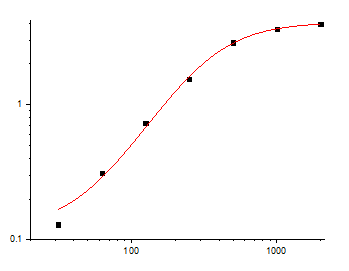1. The protein histidine phosphatase LHPP is a tumour suppressor.
Histidine phosphorylation, the so-called hidden phosphoproteome, is a poorly characterized post-translational modification of proteins. Here Sravanth K. Hindupur at University of Basel in Basel, Switzerland and his colleagues describe a role of histidine phosphorylation in tumorigenesis. Proteomic analysis of 12 tumours from an mTOR-driven hepatocellular carcinoma mouse model revealed that NME1 and NME2, the only known mammalian histidine kinases, were upregulated. Conversely, expression of the putative histidine phosphatase LHPP was downregulated specifically in the tumours. They demonstrate that LHPP is indeed a protein histidine phosphatase. Consistent with these observations, global histidine phosphorylation was significantly upregulated in the liver tumours. Sustained, hepatic expression of LHPP in the hepatocellular carcinoma mouse model reduced tumour burden and prevented the loss of liver function. Finally, in patients with hepatocellular carcinoma, low expression of LHPP correlated with increased tumour severity and reduced overall survival. Thus, LHPP is a protein histidine phosphatase and tumour suppressor, suggesting that deregulated histidine phosphorylation is oncogenic.
Read more, please click https://www.nature.com/articles/nature26140
2. DNA methylation-based classification of central nervous system tumours.
Accurate pathological diagnosis is crucial for optimal management of patients with cancer. For the approximately 100 known tumour types of the central nervous system, standardization of the diagnostic process has been shown to be particularly challenging—with substantial inter-observer variability in the histopathological diagnosis of many tumour types. Here David Capper at University Hospital Heidelberg in Heidelberg, Germany and his colleagues present a comprehensive approach for the DNA methylation-based classification of central nervous system tumours across all entities and age groups, and demonstrate its application in a routine diagnostic setting. They show that the availability of this method may have a substantial impact on diagnostic precision compared to standard methods, resulting in a change of diagnosis in up to 12% of prospective cases. For broader accessibility, they have designed a free online classifier tool, the use of which does not require any additional onsite data processing. Their results provide a blueprint for the generation of machine-learning-based tumour classifiers across other cancer entities, with the potential to fundamentally transform tumour pathology.
Read more, please click https://www.nature.com/articles/nature26000
3. EWS–FLI1 increases transcription to cause R-loops and block BRCA1 repair in Ewing sarcoma.
Ewing sarcoma is an aggressive paediatric cancer of the bone and soft tissue. It results from a chromosomal translocation, predominantly t(11;22)(q24:q12), that fuses the N-terminal transactivation domain of the constitutively expressed EWSR1 protein with the C-terminal DNA binding domain of the rarely expressed FLI1 protein. Ewing sarcoma is highly sensitive to genotoxic agents such as etoposide, but the underlying molecular basis of this sensitivity is unclear. Here Aparna Gorthi at University of Texas Health at San Antonio in San Antonio, Texas, USA and his colleagues show that Ewing sarcoma cells display alterations in regulation of damage-induced transcription, accumulation of R-loops and increased replication stress. In addition, homologous recombination is impaired in Ewing sarcoma owing to an enriched interaction between BRCA1 and the elongating transcription machinery. Finally, they uncover a role for EWSR1 in the transcriptional response to damage, suppressing R-loops and promoting homologous recombination. Their findings improve the current understanding of EWSR1 function, elucidate the mechanistic basis of the sensitivity of Ewing sarcoma to chemotherapy (including PARP1 inhibitors) and highlight a class of BRCA-deficient-like tumours.
Read more, please click https://www.nature.com/articles/nature25748
4. Extensive impact of non-antibiotic drugs on human gut bacteria.
A few commonly used non-antibiotic drugs have recently been associated with changes in gut microbiome composition, but the extent of this phenomenon is unknown. Here, Lisa Maier at European Molecular Biology Laboratory in Heidelberg, Germany and her colleagues screened more than 1,000 marketed drugs against 40 representative gut bacterial strains, and found that 24% of the drugs with human targets, including members of all therapeutic classes, inhibited the growth of at least one strain in vitro. Particular classes, such as the chemically diverse antipsychotics, were overrepresented in this group. The effects of human-targeted drugs on gut bacteria are reflected on their antibiotic-like side effects in humans and are concordant with existing human cohort studies. Susceptibility to antibiotics and human-targeted drugs correlates across bacterial species, suggesting common resistance mechanisms, which they verified for some drugs. The potential risk of non-antibiotics promoting antibiotic resistance warrants further exploration. Their results provide a resource for future research on drug–microbiome interactions, opening new paths for side effect control and drug repurposing, and broadening our view of antibiotic resistance.
Read more, please click https://www.nature.com/articles/nature25979
5. Epigenetic reprogramming enables the transition from primordial germ cell to gonocyte.
Gametes are highly specialized cells that can give rise to the next generation through their ability to generate a totipotent zygote. In mice, germ cells are first specified in the developing embryo around embryonic day (E) 6.25 as primordial germ cells (PGCs). Following subsequent migration into the developing gonad, PGCs undergo a wave of extensive epigenetic reprogramming around E10.5–E11.5, including genome-wide loss of 5-methylcytosine. The underlying molecular mechanisms of this process have remained unclear, leading to our inability to recapitulate this step of germline development in vitro. Here Peter W. S. Hill at MRC London Institute of Medical Sciences (LMS) in London, UK and his colleagues show, using an integrative approach, that this complex reprogramming process involves coordinated interplay among promoter sequence characteristics, DNA (de)methylation, the polycomb (PRC1) complex and both DNA demethylation-dependent and -independent functions of TET1 to enable the activation of a critical set of germline reprogramming-responsive genes involved in gamete generation and meiosis. Their results also reveal an unexpected role for TET1 in maintaining but not driving DNA demethylation in gonadal PGCs. Collectively, their work uncovers a fundamental biological role for gonadal germline reprogramming and identifies the epigenetic principles of the PGC-to-gonocyte transition that will help to guide attempts to recapitulate complete gametogenesis in vitro.

Read more, please click https://www.nature.com/articles/nature25964












 Small, approximately 10-kilobase microhomology-mediated tandem duplications are abundant in the genomes of BRCA1-linked but not BRCA2-linked breast cancer. Here Nicholas A. Willis at Beth Israel Deaconess Medical Center and Harvard Medical School in Massachusetts, USA and his colleagues define the mechanism underlying this rearrangement signature. They show that, in primary mammalian cells, BRCA1, but not BRCA2, suppresses the formation of tandem duplications at a site-specific chromosomal replication fork barrier imposed by the binding of Tus proteins to an array of Ter sites. BRCA1 has no equivalent role at chromosomal double-stranded DNA breaks, indicating that tandem duplications form specifically at stalled forks. Tandem duplications in BRCA1 mutant cells arise by a replication restart-bypass mechanism terminated by end joining or by microhomology-mediated template switching, the latter forming complex tandem duplication breakpoints. Solitary DNA ends form directly at Tus–Ter, implicating misrepair of these lesions in tandem duplication formation. Furthermore, BRCA1 inactivation is strongly associated with ~10 kilobase tandem duplications in ovarian cancer. This tandem duplicator phenotype may be a general signature of BRCA1-deficient cancer.
Small, approximately 10-kilobase microhomology-mediated tandem duplications are abundant in the genomes of BRCA1-linked but not BRCA2-linked breast cancer. Here Nicholas A. Willis at Beth Israel Deaconess Medical Center and Harvard Medical School in Massachusetts, USA and his colleagues define the mechanism underlying this rearrangement signature. They show that, in primary mammalian cells, BRCA1, but not BRCA2, suppresses the formation of tandem duplications at a site-specific chromosomal replication fork barrier imposed by the binding of Tus proteins to an array of Ter sites. BRCA1 has no equivalent role at chromosomal double-stranded DNA breaks, indicating that tandem duplications form specifically at stalled forks. Tandem duplications in BRCA1 mutant cells arise by a replication restart-bypass mechanism terminated by end joining or by microhomology-mediated template switching, the latter forming complex tandem duplication breakpoints. Solitary DNA ends form directly at Tus–Ter, implicating misrepair of these lesions in tandem duplication formation. Furthermore, BRCA1 inactivation is strongly associated with ~10 kilobase tandem duplications in ovarian cancer. This tandem duplicator phenotype may be a general signature of BRCA1-deficient cancer.



